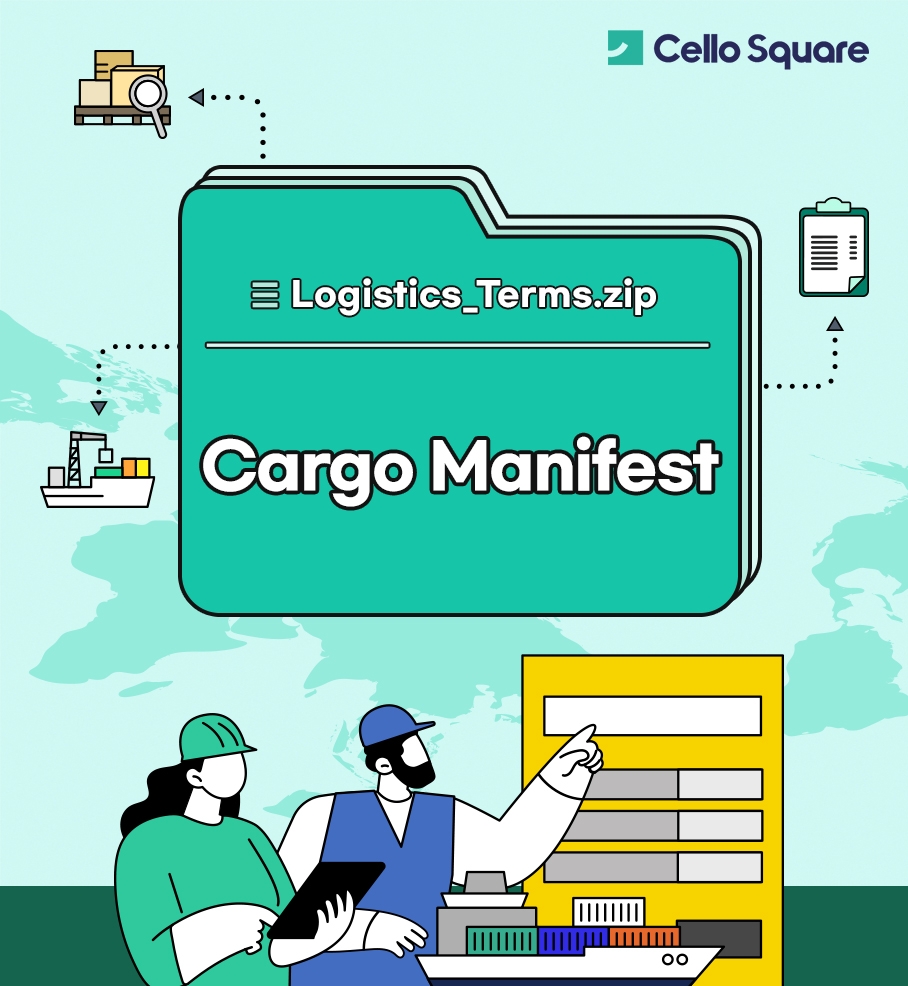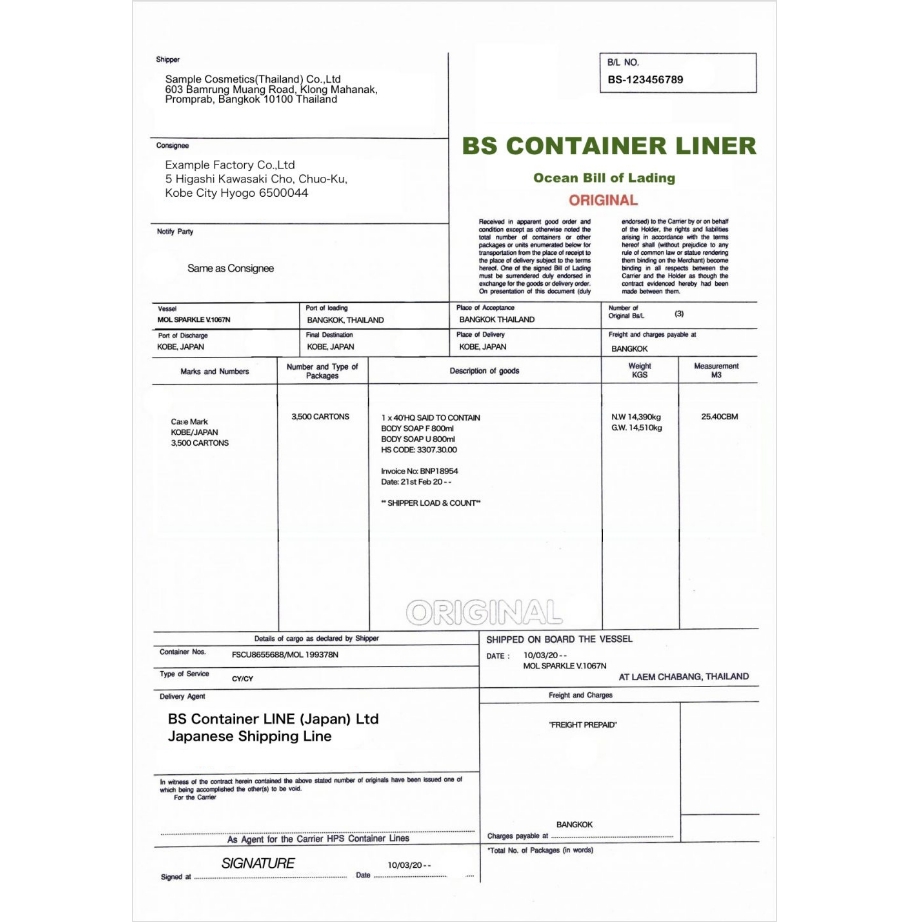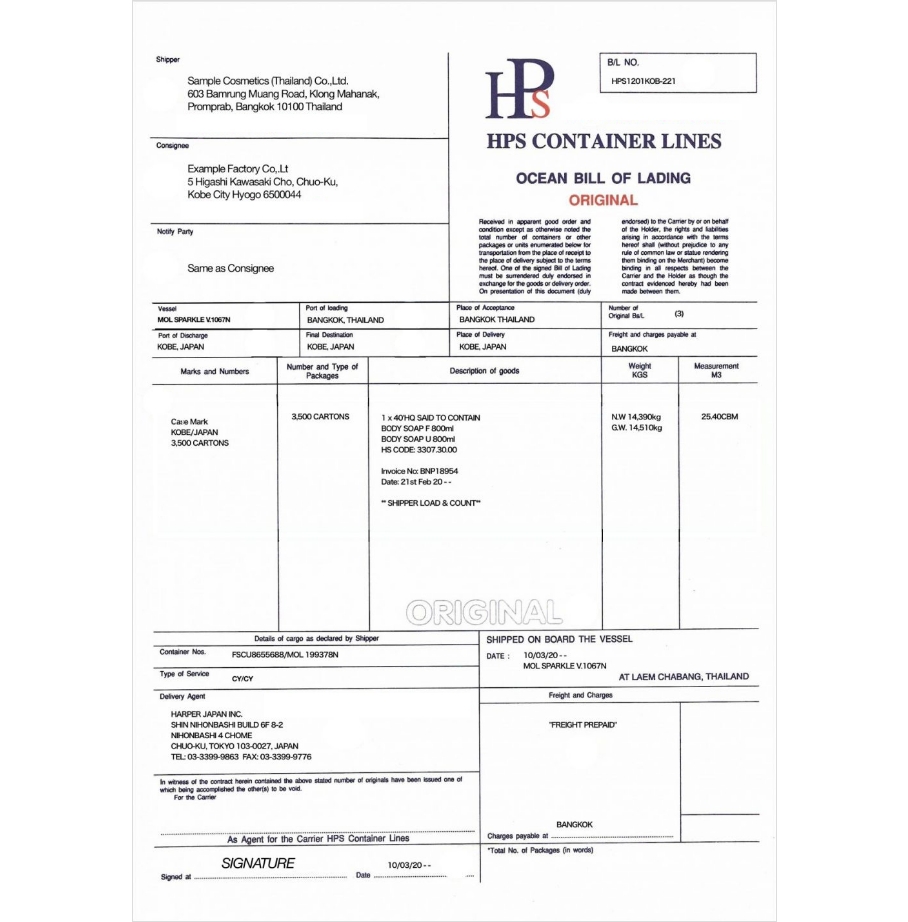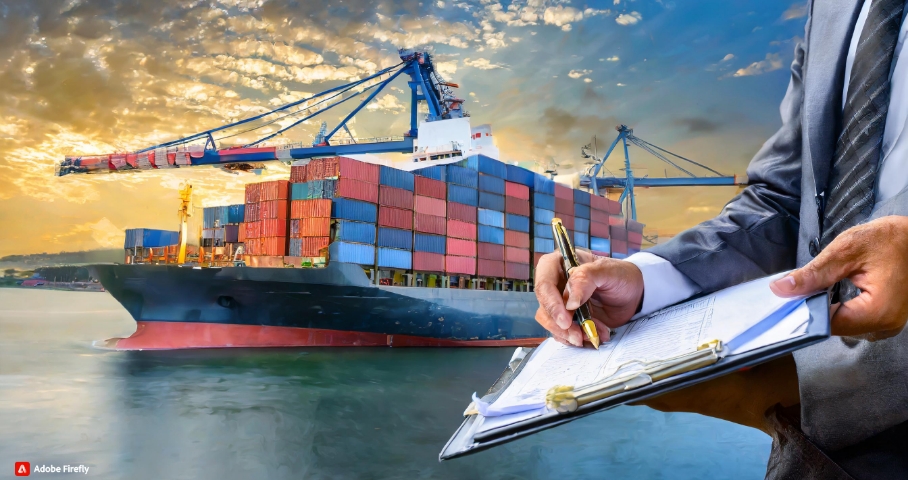

A cargo manifest is a document that provides a detailed list of the contents and details of a shipment being transported via various modes of transportation, such as air, sea, rail, or road. This document plays a crucial role in the logistics and transportation industry by providing essential information about the cargo being transported. Here are some key aspects of a cargo manifest:
1. Inventory Tracking
A cargo manifest serves as an inventory tracking document. It lists all the items, goods, or products included in a shipment, along with specific details about each item, such as its description, quantity, weight, dimensions, and any special handling requirements. This information is vital for tracking the cargo throughout its journey from the point of origin to the final destination.
2. Compliance
Cargo manifests are essential for regulatory and compliance purposes. They allow customs authorities and other relevant agencies to verify that the shipment complies with all applicable laws and regulations. This includes ensuring that no prohibited or hazardous materials are being shipped. Additionally, cargo manifests help in calculating duties, taxes, and fees that may be applicable to the cargo.
3. Planning
The information provided in a cargo manifest is crucial for planning and managing the logistics of the transportation process. It helps carriers and transportation companies allocate space for the cargo, plan loading and unloading operations efficiently, and assign personnel to handle the shipment. This planning aspect ensures that the transportation process runs smoothly and efficiently.
4. Documentation
A cargo manifest serves as a receipt and documentation of what cargo was loaded onto a particular conveyance (such as a ship, aircraft, truck, or train) and its condition at the time of loading. This documentation is important for both the shipper and the recipient, as it provides a record of the shipped items and their condition. In case of disputes or claims, the cargo manifest can serve as a legal record to establish responsibilities and liabilities.
Overall, a cargo manifest is a critical document in the supply chain and transportation industry, facilitating the smooth movement of goods while ensuring compliance with regulations and providing documentation for accountability and record-keeping purposes. (Source: Firefly, Adobe)
(Source: Firefly, Adobe)
There are several different types of cargo manifests used in the logistics industry, each serving specific purposes and tailored to the mode of transportation and the nature of the cargo being transported. Some of the common types of cargo manifests include:
1. Master Bill of Lading (Master B/L)
This document is a critical component of ocean shipping. The Master B/L is issued by the carrier or their agent and serves as the primary contract of carriage for all cargo loaded onto a vessel for a specific voyage. It includes essential information such as the vessel's name, voyage details, the names and addresses of both the shipper and consignee, a description of the goods, quantities, weights, container numbers, and port of loading and discharge. It is a legal document that establishes the carrier's responsibility for the cargo during transit.
2. House Bill of Lading (House B/L)
In ocean shipping, a House B/L is issued by a freight forwarder or NVOCC and is linked to the Master B/L. It contains details about the goods shipped by a specific shipper. House B/Ls are used when multiple shippers have cargo on the same vessel. They allow for more flexibility in managing and tracking individual shipments within a consolidated container.
3. Airway Bill (AWB)
This document is a crucial component of airfreight transportation. It serves as both a receipt and a contract of carriage. An AWB includes information about the shipper, consignee, flight details, the description of goods (including dimensions and weight), handling instructions, and any applicable special requirements. Unlike ocean bills of lading, AWBs are non-negotiable, making them easier to use in air cargo transactions.
4. Cargo Manifest for Ships
This manifest is prepared by the shipping company or the vessel's agent. It provides a comprehensive list of all cargo items loaded onto a ship. It includes details such as cargo descriptions, quantities, weights, dimensions, container numbers, and stowage locations on the vessel. Customs authorities and port operators use this document for clearance and cargo handling.
5. Cargo Manifest for Aircraft
Similar to its maritime counterpart, this manifest details the cargo loaded onto an aircraft. It includes information about cargo weights, volumes, descriptions, and any special handling requirements. Airline personnel rely on this document to ensure proper loading, balancing, and unloading of cargo.
6. Cargo Manifest for Trucks and Rail
These manifests are used in land transportation. They list the cargo being transported by truck or train, including details such as shipper and consignee information, cargo description, quantities, weights, and any required special handling instructions. They are essential for tracking and managing cargo during road and rail transport.
7. Customs Manifest
This type of manifest is essential for complying with customs regulations. It includes specific details about the cargo, such as its nature, value, country of origin, and any applicable duties or taxes. Customs authorities use this document to assess and clear shipments at international borders.
8. Consolidation Manifest
When multiple shipments are combined into a single container or shipment for efficiency and cost savings, a consolidation manifest is created. It lists all individual shipments included in the consolidation, along with their respective details. It helps in documenting and managing the consolidated cargo.
9. Dangerous Goods Manifest
For shipments containing hazardous materials, a dangerous goods manifest is a critical safety document. It provides detailed information about the hazardous substances being transported, their classification, packaging, labeling, emergency contact information, and safety precautions. It ensures that proper handling and safety measures are taken throughout the transportation process.
10. Transshipment Manifest
This manifest is used when cargo is transferred from one mode of transportation to another during its journey. For example, when cargo arrives at a port and is subsequently loaded onto trucks for inland delivery. The transshipment manifest documents the transfer and includes information about the cargo, its route, and any changes in responsibility during the transfer.
These are some of the common types of cargo manifests used in the logistics and transportation industry. The specific type of manifest used depends on the mode of transportation, the nature of the cargo, and regulatory requirements.
Cargo manifests contain a variety of key data elements to provide comprehensive information about the cargo being transported. These data elements help in tracking, managing, and ensuring the safe and efficient movement of goods. The typical details found in cargo manifests include:
1. Shipper and Consignee
Shipper: This section includes the name and complete contact details of the entity or person responsible for shipping the goods. It identifies the party initiating the shipment.
Consignee: Similarly, this section contains the name and contact information of the entity or person to whom the goods are being shipped. It identifies the recipient or consignee at the destination.
2. Commodity Description
Nature of Goods: A comprehensive description of the cargo is provided, including details about the type, category, or nature of the goods. This description helps in identifying the contents of the shipment.
HS Codes: Harmonized System (HS) codes or product codes may be included for customs classification, ensuring proper tariff assessment and regulatory compliance.
Hazardous Materials Labels: If applicable, any labels or markings indicating the presence of hazardous or dangerous materials are specified, ensuring safe handling and compliance with safety regulations.
3. Origin and Destination
Origin: This section identifies the place or location where the cargo originated, often including details about the manufacturer, supplier, or shipping point. It provides the starting point of the shipment.
Destination: The final destination of the cargo is indicated, which could be a specific address, port, airport, distribution center, or recipient's location. It helps in routing and delivery planning.
4. Piece Count and Packaging Type
Piece Count: The number of individual units, packages, or items included in the shipment is specified. This count assists in verifying the completeness of the cargo.
Packaging Type: Information about how the goods are packaged is provided, including details about the type of packaging used, such as boxes, crates, pallets, drums, or containers. It aids in proper handling and stowage.
5. Gross Weight and Volume
Gross Weight: The total weight of the cargo is mentioned, typically specified in kilograms, pounds, metric tons, or other applicable units. It helps in calculating transportation costs and ensuring load balance.
Volume: The total volume occupied by the cargo is indicated, often specified in cubic meters or cubic feet. It assists in space allocation and storage planning.
6. Vessel/Voyage or Conveyance Details
Vessel/Voyage: For maritime transport, this section includes the name of the vessel and the voyage number, facilitating vessel tracking and scheduling.
Conveyance Details: For air transport, it may include the tail number of the aircraft, while for containerized cargo, the container number is crucial for tracking and identifying specific containers or trailers.
7. Freight Forwarder and Notify Party
Freight Forwarder: The name and contact details of any intermediaries or freight forwarders involved in the shipment are included. They play a role in coordinating the logistics.
Notify Party: The party to be notified upon arrival or in case of any issues with the shipment is specified, ensuring efficient communication.
8. Special Instructions
This section contains any specific handling or storage instructions for the cargo, such as temperature requirements, fragility, or any other special considerations. It ensures safe and proper handling.
9. Booking/Bill of Lading Number
A reference number associated with the booking or bill of lading for the shipment is provided. This number is crucial for documentation purposes and for tracking the shipment's progress.
These key data elements are essential for accurate tracking, compliance with regulations, and effective management of cargo throughout its journey from the point of origin to the final destination. They provide transparency and accountability in the logistics and transportation process.
 (Source: Firefly, Adobe)
(Source: Firefly, Adobe)
Generating and transmitting cargo manifests have evolved with the advancement of technology and automation in the logistics industry. Here are some key points regarding the generation, transmission, and accuracy of cargo manifests:
Generation and Transmission
1. Electronic Generation: Modern cargo manifests are typically generated electronically using specialized freight forwarding software or transportation management systems. These systems allow for the efficient input of data, reducing the likelihood of errors and streamlining the process.
2. Printing and Signing: Once generated, the electronic cargo manifest is often printed for physical documentation purposes. It is then signed by relevant parties involved in the shipment, such as the shipper, carrier, or logistics personnel. The signed copy serves as a legal record.
3. Electronic Data Interchange (EDI): To expedite customs clearance and regulatory compliance, manifest data is transmitted electronically to customs authorities and other regulatory bodies using Electronic Data Interchange (EDI) protocols. EDI facilitates the secure and real-time exchange of information between stakeholders.
Manifest Accuracy
Ensuring the accuracy and completeness of cargo manifests is of utmost importance to prevent delays, fines, or cargo-related issues. Best practices include:
1. Verification Against Documentation: Carefully verifying cargo details against purchase orders, packing lists, and other relevant documentation is crucial. Any discrepancies should be resolved before manifest generation.
2. Weight Checks: Performing container or trailer weight checks before loading helps ensure that the declared weights match the actual weights. This helps prevent issues related to overloading and weight discrepancies.
3. Reconciliation: Reconciling manifest data with the actual cargo before the vessel's departure or border crossing is a critical step. It helps identify and rectify any discrepancies, ensuring that the manifest accurately represents the cargo being transported.
4. Post-Arrival Comparison: Upon arrival at the destination or port, comparing the manifest data to the actual cargo is essential. Any discrepancies, shortages, or damages should be promptly documented and addressed.
5. Documentation Compliance: Ensuring that the cargo manifest complies with all relevant regulations, including customs declarations and requirements for hazardous materials, is crucial. Non-compliance can result in severe consequences.
6. Regular Training and Auditing: Ongoing training of personnel involved in manifest preparation and regular internal audits of manifest accuracy can help maintain high standards of data quality
By following these best practices, logistics professionals can minimize the risk of errors, improve regulatory compliance, and ensure the smooth and efficient movement of cargo while avoiding potential complications and penalties associated with inaccurate manifests.-
In conclusion, the cargo manifest is a vital document in the world of logistics and transportation. It serves as the backbone of efficient and organized cargo handling, providing essential information about the goods being transported, their quantity, and other crucial details. Understanding the significance of accurate cargo manifests is essential not only for logistics professionals but also for anyone involved in international trade. The document facilitates smooth operations, compliance with regulations, and minimizes the risk of errors and disputes. In an ever-evolving global market, mastering the art of creating and handling cargo manifests will remain a critical skill for businesses and individuals engaged in the movement of goods.